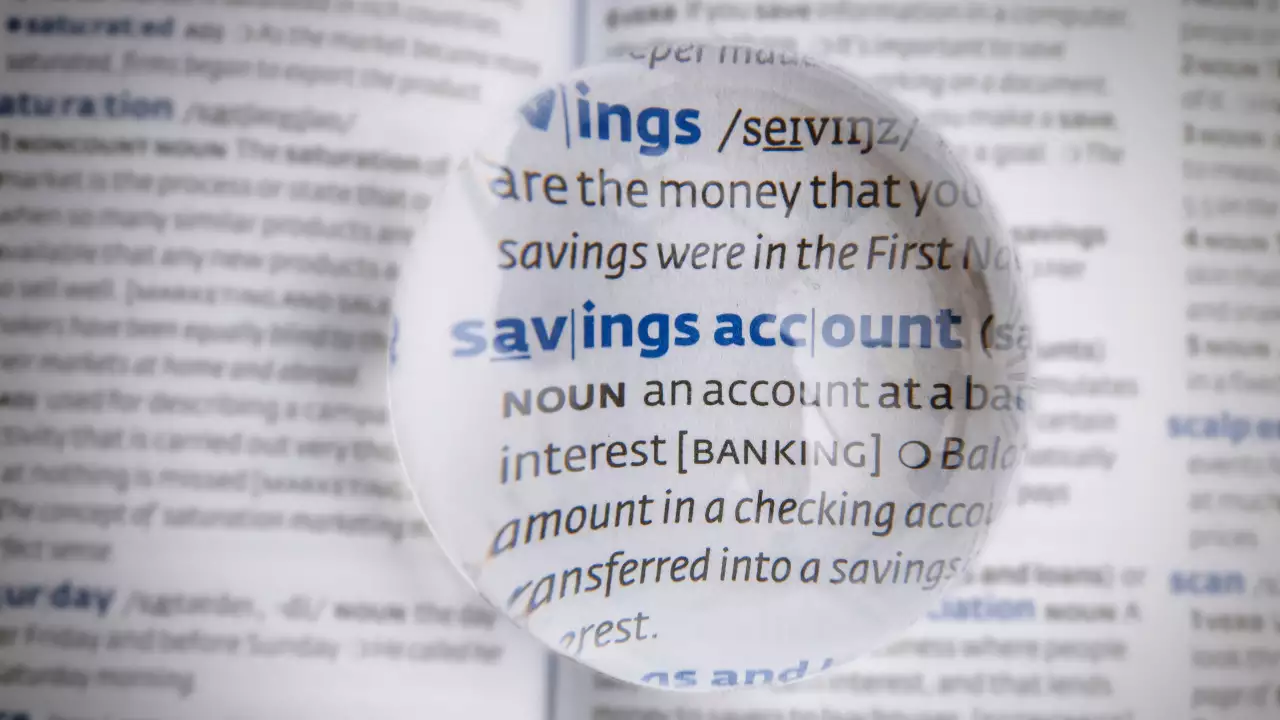Introduction
A savings account is a basic bank account that allows you to set aside money and earn interest on your deposits. The main purpose of a savings account is to provide a secure place to store cash that you may need to access in the future, while generating some passive income through interest.
Savings accounts are very convenient, easy to open, carry little risk, and allow you to withdraw your money at any time. They can be useful for building an emergency fund, saving up for short-term goals like vacations or large purchases, or simply earning interest on extra cash.
Understanding Savings Accounts

Savings accounts work by paying account holders interest on the money they deposit. Banks and credit unions use the money in savings accounts, along with money from other types of accounts, to fund loans and investments.
In return, they pay account holders a portion of the earnings from those activities in the form of interest.
When you deposit money into a savings account, you are allowing the bank to use your money temporarily in exchange for compensation in the form of interest payments. The bank pays a fixed or variable interest rate on the account.
As interest accrues on the account, it is added to the principal balance so that interest begins earning interest as well. This is known as compound interest and allows your money to grow faster over time.
Most savings accounts are very safe thanks to FDIC insurance, which covers deposits up to $250,000 per depositor, per insured bank. So even if the bank fails, account holders are protected from losses on their deposited funds.
Discussion on the Safety and Reliability of Savings Accounts
Savings accounts are considered an extremely reliable place to keep your money compared to other options like investing or keeping large amounts of cash at home. There are several reasons why savings accounts are so safe:
FDIC Insurance
As mentioned earlier, savings accounts at FDIC-insured banks are protected by up to $250,000 in coverage per depositor, per institution. This federal insurance protects account holders from losses if an FDIC-insured bank fails.
Low Risk Investments
Banks and credit unions use deposited funds from savings accounts to make relatively low risk investments, like issuing mortgages, business loans, and government-backed securities. This provides account holders very stable returns in the form of interest payments.
Regulation
Banks and credit unions are heavily regulated to ensure solvency, liquidity, and responsible practices. Regular audits and oversight help prevent fraud or abuse of deposited funds. So in summary, federal insurance, conservative investment strategies and heavy regulation all contribute to savings accounts being an extremely reliable place to store cash. The only real risk is inflation slowly eroding the purchasing power of money left in a low interest savings account long term.
Features of a Savings Account

Savings accounts come with many useful features that make saving and managing money convenient:
Easy Transactions and Payment of Bills
Most savings accounts allow easy transfers to linked checking accounts. This allows you to seamlessly move money to cover spending needs. Many banks also allow online bill payments directly from savings accounts.
ATM Facility and Cross-Product Benefits
Customers typically receive an ATM card with a savings account, allowing cash withdrawals when needed. Savings accounts are also often eligible for benefits attached to other products like discounts on loans.
Interest Rates and Minimum Balance Requirements
Savings accounts earn interest from banks paying account holders a portion of earnings from investing deposits. Interest rates range from 0.01% to over 4% APY currently. Some accounts require a minimum balance to earn interest.
Withdrawal Flexibility and Online Banking
Withdrawals from savings accounts are easy, though some banks limit transactions. Mobile and online banking provide account access anytime.
Types of Savings Accounts

There are several different types of savings accounts available from banks and credit unions:
Regular Savings Account
This basic account pays modest interest rates and typically has no minimum balance requirement. It offers basic savings features and FDIC insurance on deposits.
High-Yield Savings Account
These accounts pay higher interest rates to savers but may have higher minimum balance requirements. Rates can be over 20 times higher than regular savings accounts.
Certificates of Deposit
CDs require locking money up for a set period to earn a fixed interest rate but offer higher returns than basic savings accounts. Early withdrawal penalties apply.There are also more specialized savings accounts like:
Salary Savings Accounts
Many banks in India offer accounts meant specifically for automatically depositing a portion of your regular salary.
Kids Savings Accounts
Savings accounts for children under 18 with parental oversight. These help teach financial literacy.
Senior Citizen Savings Accounts
Special savings accounts with higher interest rates for senior citizens, such as those over 60 years of age.
Family Savings Accounts
Joint accounts allowing two or more family members to contribute to and manage shared savings.
High-Yield Savings Accounts
A high-yield savings account is a type of savings account offering higher interest rates than a typical savings account. The national average for savings account rates is currently around 0.46% APY, while high-yield savings accounts can offer over 4% APY.
These accounts work great as an emergency fund or for short-term savings goals since they offer easy access, FDIC insurance protection, and much better returns than regular savings accounts. There are some key advantages and disadvantages to consider with high-yield savings accounts specifically:
Pros
- Higher interest rates mean faster growth on savings deposit balances
- FDIC insured for safety up to $250,000 per depositor
- Easy online access and liquidity
Cons
- May have higher minimum balance requirements
- Interest rates can fluctuate over time
- Limited transactions allowed per month
So while not perfect, high-yield savings accounts offer a nice compromise between return and safety for goal-based savings.
Top Savings Accounts in the USA

There are many excellent savings account options to choose from in the US currently, including:
LendingClub High-Yield Savings – 4.65% APY
No minimum balance requirements and no monthly fees make this a top choice for high return.
Marcus High-Yield Savings – 4.35% APY
Marcus by Goldman Sachs offers strong rates with no monthly costs or balance minimums.
Ally Online Savings – 4.20% APY
Ally has fantastic rates and a very user-friendly banking platform. In addition to high rates, the top savings accounts also make it easy to open, deposit, manage, and withdraw funds while providing excellent FDIC insurance protection.
How to Choose a Savings Account
When selecting a savings account, consider factors like:
Interest Rates
Annual Percentage Yield reflects how much interest an account pays based on your balance and compounding frequency. Prioritize accounts with higher APYs.
Fees
Watch for monthly maintenance fees, balance minimums to earn interest, excessive withdrawal fees and other hidden costs.
Financial Goals
Make sure the liquidity, withdrawal limits, interest rate and other features fit your specific financial goals for the account.
FDIC Insurance
Ensure complete insurance coverage on deposits by staying below coverage limits per depositor, per institution.
Conclusion
Having a savings account is critical for safely accumulating funds to use for goals like emergencies, vacations, or large purchases. Choosing an account with high interest rates, low fees, and good FDIC insurance coverage allows your money to grow faster over time with little risk. Take time to research accounts and select one fitting your unique financial needs.
Sources:
https://www.synchronybank.com/blog/what-is-a-savings-account/
https://www.investopedia.com/articles/personal-finance/062315/how-interest-rates-work-savings-accounts.asp
https://www.experian.com/blogs/ask-experian/are-high-yield-savings-accounts-safe/
https://www.hdfcbank.com/personal/resources/learning-centre/save/top-7-features-of-a-savings-account
https://www.bankrate.com/banking/savings/what-is-a-savings-account/
https://fortune.com/recommends/banking/how-interest-works-on-savings-account/
https://www.investopedia.com/ask/answers/12/safest-place-for-money.asp
https://www.bankrate.com/banking/checking-vs-savings-accounts/
https://www.forbes.com/advisor/banking/savings/what-is-a-savings-account/
https://money.com/how-interest-rates-work-on-savings-accounts/
https://smartasset.com/checking-account/are-high-yield-savings-accounts-safe
https://www.nerdwallet.com/article/banking/checking-vs-savings